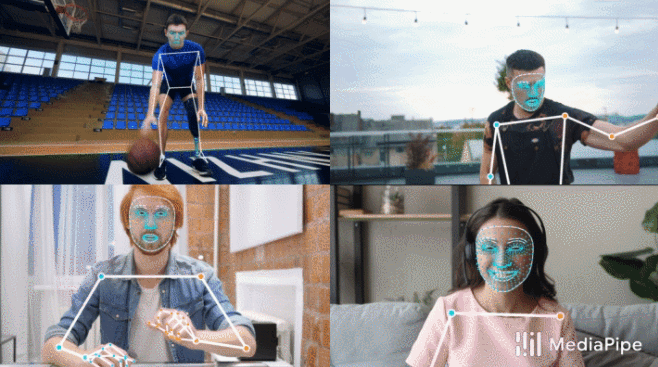本帖最后由 云天 于 2022-2-21 22:34 编辑 【项目背景】 【项目设计】 【测试程序】
import numpy as np
import time
import cv2
import PoseModule as pm
cap = cv2.VideoCapture('ywqz2.mp4')
detector = pm.poseDetector()
pTime = 0
success=True
while success:
success, img = cap.read()
if success:
img = cv2.resize(img, (640, 480))
img = detector.findPose(img, False)
lmList = detector.findPosition(img, False)
if len(lmList) != 0:
angle2=detector.findAngle(img, 12, 24, 26)
angle3=detector.findAngle(img, 24, 26, 28)
cTime = time.time()
fps = 1 / (cTime - pTime)
pTime = cTime
cv2.putText(img, str(int(fps)), (50, 100), cv2.FONT_HERSHEY_PLAIN, 5,(255, 0, 0), 5)
cv2.imshow("Image", img)
cv2.waitKey(1)
cap.release()
cv2.destroyAllWindows()
复制代码
import numpy as np
import time
import cv2
import PoseModule as pm
import pyttsx3
engine = pyttsx3.init()
cap = cv2.VideoCapture('ywqz2.mp4')
detector = pm.poseDetector()
count = 0
dir = 0
pTime = 0
success=True
countpre=0
while success:
success, img = cap.read()
if success:
img = cv2.resize(img, (640, 480))
img = detector.findPose(img, False)
lmList = detector.findPosition(img, False)
if len(lmList) != 0:
#身体弯曲角度
angle2=detector.findAngle(img, 12, 24, 26) 复制代码 engine.runAndWait()
【利用物联网】 Arduino 通过物联网模块接收数据,通过语音合成模块播放个数数据,并用LED灯显示个数。2、组装硬件
4、编写并上传程序
Arduino,通过物联网模块接收物联网发送过来的数字,并通过语音合成模块播报出来,且通过LED灯显示。
【Mind+Python主程序】
import numpy as np
import time
import cv2
import PoseModule as pm
import siot
siot.init(client_id="SyWH2Af2sV",server="iot.dfrobot.com.cn",port=1883,user="X8jykxFnR",password="u8jskbFngz")
siot.connect()
siot.loop()
cap = cv2.VideoCapture(0)
detector = pm.poseDetector()
count = 0
dir = 0
pTime = 0
success=True
countpre=0
while success:
success, img = cap.read()
if success:
img = cv2.resize(img, (640, 480))
img = detector.findPose(img, False)
lmList = detector.findPosition(img, False)
if len(lmList) != 0:
#身体弯曲角度
angle2=detector.findAngle(img, 12, 24, 26)
angle3=detector.findAngle(img, 24, 26, 28)
if angle3>270:
if angle2 >130:
if dir == 0:
count += 0.5
dir = 1
if angle2 < 80:
if dir == 1:
count += 0.5
dir = 0
if countpre!=int(count):
countpre=int(count)
siot.publish(topic="5n92uqBMg", data=str(int(count)))
print(int(count))
cTime = time.time()
fps = 1 / (cTime - pTime)
pTime = cTime
cv2.putText(img, str(int(count)), (50, 450), cv2.FONT_HERSHEY_PLAIN, 5,(255, 0, 0), 5)
cv2.putText(img, str(int(fps)), (50, 100), cv2.FONT_HERSHEY_PLAIN, 5,(255, 255, 0), 5)
cv2.imshow("Image", img)
cv2.waitKey(1)
cap.release()
cv2.destroyAllWindows()
复制代码 【演示视频】
存在脊柱损伤风险 







 沪公网安备31011502402448
沪公网安备31011502402448